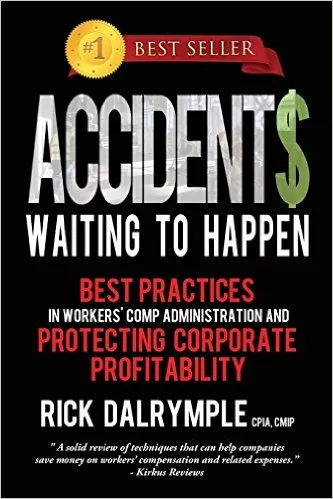Why Roofing Companies Get In Trouble
I’ve been a roofing contractor my entire career. Over the past 23 years, I’ve had the wonderful opportunity to spend time with some of the best minds in the roofing business. My perspective on issues has come from other contractors, distributors, manufacturers, manufacturer reps, association leaders, educators, equipment people, preachers and consultants. All aspects of the industry have touched my thought process at one time or another.
I’ve worked as a superintendent, estimator, salesman, project manager, service manager, general manager, president, CEO, chairman of the board and stockholder.
I’ve started four offices from start-ups and purchased three companies. I led and financed a roll-up that purchased 21 companies over a 14-month time frame. I attempted an IPO that blew-up, then salvaged the deal with venture capitalists and bankers. I’ve been through the good times and bad times. I have, as they use to say on ABC’s Wide World of Sports, felt the “thrill of victory and the agony of defeat.” The bottom line is, I’ve taken my fair share of risks and been taught many lessons in the process.
My thoughts and observations have grown out of spending my career working to professionalize an industry that has lent itself to a number of unprofessionals. I, along with many others, love this industry and feel it deserves a better image and more predictable profits. However, we will only improve our image and profits when we improve our performance; that is, when we as an industry can deliver:
- what our customers want
- when they want it
- at a price they feel is fair, yet allows us something called “net profits”
So, without further pontifications I’d like to share my views on why roofing companies get in trouble.
Let’s start by taking a pop quiz. Nobody will see your score so please try to be brutally honest with yourself on your answers. (If your organization is of the size that allows you to have your fingers in every aspect of the business, this exercise doesn’t apply.)
Roofing Pop Quiz
1. Does everyone in the organization understand the company’s Mission and Vision?2. Do all workers in your company know their specific areas of responsibilities and have formal position descriptions?
3. Do you have a formal organizational chart that channels how the business flows through the company?
4. Do you have a formalized service department or is it an extension of the construction operation?
5. Do you have accurate, timely job costing that is shared with all the people responsible for the project?
6. Do you produce accurate monthly financial statements in a timely fashion?
7. Do you have a formalized mark-up strategy that you employ, which takes into consideration overhead recovery or project size?
8. Do your estimators estimate using the same labor productivity factors?
9. Do you always have a pre-job meeting before you start a project and does this meeting include the foreman?
10. Do you have accurate timely forecasting capabilities to understand your capacity constraints?
11. Do you have a formalized collection policy that properly protects your lien rights?
12. Do you have a real drug-testing program?
13. Do you have formalized personal reviews and new employee orientation?
14. Are you really committed to safety or do you just attempt to comply with the regulations?
15. Do you accurately track your bid/capture ratio?
16. Do you have an incentive compensation plan that promotes teamwork, customer service and what’s good for the organization?
Evaluating Results
It has been my experience that most everyone can answer “no” to a few, if not many, of the questions on our test. Those questions we can answer “yes” to might also need to be re-examined, because things have evolved since you initiated that discipline to your organization. If you’re like most contractors, this is a never-ending process. Business is always changing. Markets shift, buyers move, turnover happens, codes change, applications change, nothing stays the same long in today’s business world. If you’re not green and growing, you’re turning brown and wilting. Your business must always be evolving or you’re going to lose ground.A few generalizations I’ve observed in almost every roofing company I’ve had the opportunity to associate with are:
- Most company presidents pull all the strings.
- No formal organizational structure or position definitions exist.
- Little, if any, process definition is available for new hires.
- Budgets outside of job-cost reports don’t exist.
- Financial reporting is weak – percent-complete calculations are left to the accountant.
- Forecasting is a foreign word and capacity constraints are many times a surprise.
- Most companies are very paper intense and aren’t taking advantage of the technology solutions available.
- Foremen aren’t considered part of the management team.
- The service department is tucked away in the back of the building, given the leftover people and equipment, and gets little formal support.
- Labor productivity isn’t monitored to the extent required.
- Little, if any, attention is paid to human resources administration outside of payroll and COBRA.
Organization Lifecycles
These observations are typical of most roofing organizations. Sure some of us can say we are better than others are, but most of these points apply to all of us. So, how do we solve this? What is the way out of this trap that most every owner/manager eventually encounters?Most recently two partners and I purchased another roofing business. Believe it or not, it was like deja-vu all over again. There are similar challenges with this new organization, just different people.
I believe that every company’s leadership has the responsibility to provide the organization with a clear vision of what the company stands for and how it conducts itself. Leadership’s role is to “build a system to run the business, hire competent people and teach them how to run the system.” If your organization can become more systems dependent, you will become less venerable to poor performance.
Control and flexibility are the two primary considerations when building a system to run the business. I look at a company as a living organism. Where the leadership of an organization is in its professional lifecycle will most likely determine how much control and flexibility the organization will demonstrate. Don’t confuse age with lifecycle. I’ve seen 40-year-old leaders act like they are 80 and I’ve seen leaders who are 70 start new businesses with a fresh idea and a young attitude.
When an organization is young it is very flexible; but usually not always controllable. As an organization ages, this relationship changes. Controllability increases and flexibility decreases. The best illustration is like the difference between a baby and an old person. The baby is very flexible and can put his foot in his mouth, but his movements and behavior are not always controllable. As we age, we loose our flexibility, become overly controlled and stop taking risk. The objective is always to move the organization towards a balance between both flexible and controllable. I call this “Prime.”
I always approach every business from the perspective that we want to have a balance between control and flexibility. After the vision and mission are properly defined and everyone knows what we stand for, I go to work on these three issues, to ensure that we are at Prime:
Structure. Is the organization structured to accomplish its objectives?
Process. Has the organization defined the processes necessary to deliver a quality product or service with minimal mistakes or waste?
People. Does the organization have people who are capable of doing what is expected?
Over the next few months, I’m going to attempt to share with you a series of articles on how we are navigating through the challenges of our new company on our way to Prime. Stay tuned.
Looking for a reprint of this article?
From high-res PDFs to custom plaques, order your copy today!





